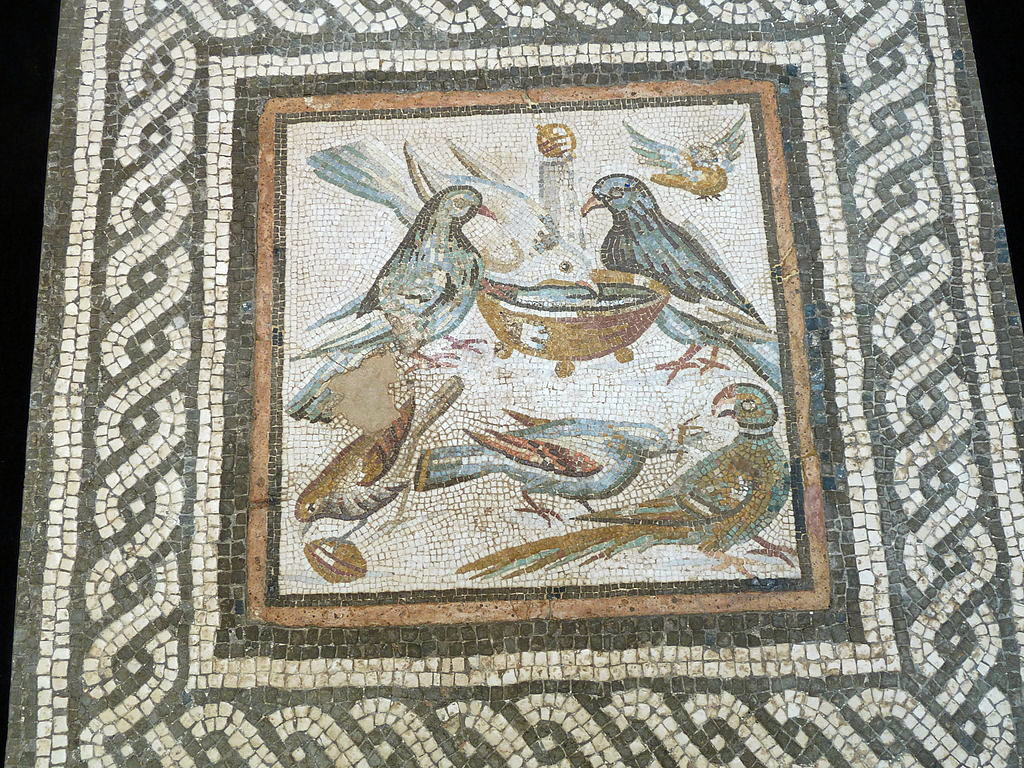Ostia - The Republican period
In the third century BC Ostia was primarily a naval base. In 267 BC it became the seat of one of the quaestores classici (officials taking care of the fleet), the quaestor Ostiensis. The office was related to the Punic wars, with Carthago. Ostia now played an important role as military harbour, and for that reason the inhabitants were freed from military duties, so that they could remain at work in the harbour. In the second century BC Ostia gradually changed to a commercial harbour. The population of the city of Rome was growing after military successes. Grain was imported from Sicily and Sardinia, later also from Africa Proconsularis, modern Tunisia, that became a province in 146 BC. The quaestor's main duty was now the supervision of the import of grain.
In the second or early first century BC the north-east part of Ostia, along the Tiber, was marked as public ground (reserved for Rome) by Caius Caninius, praetor urbanus (from Rome). Little is known about the settlement in this period, because Ostia was almost entirely rebuilt in the second century AD. In the lower levels remains of domus, rich houses, were found, comparable to those in Pompeii and Herculaneum.
 |
| Mosaic from a domus, found in the older levels. First century AD. Photo: Wikimedia, Notafly. |
In 87 BC, during the civil war between the supporters of Sulla and Marius, the city was occupied and plundered by Marius. In 69/8 BC the city was plundered again, this time by pirates, who also destroyed a fleet in the river harbour. Not long afterwards Pompeius dealt with these pirates. It is probably the latter invasion that led to the building of new town walls by Marcus Tullius Cicero, in 63 BC. The work was finished in 58 BC by Publius Clodius Pulcher, a political rival of Cicero. The new walls enclosed an area that extended far beyond the walls of the Castrum. Until the first century BC Ostia was governed from Rome, but from now on, possibly from the time of the building of the new walls, Ostia had its own government. The oldest fragment of the town records (fasti) is dated to 49 BC, but it is clear that this is not the start of the list.
Important monuments from the first century BC are the Four Small Temples and the Temple of Hercules. These were built by members of the local aristocracy: Publius Lucilius Gamala, four times duovir ("mayor"), and Caius Cartilius Poplicola, eight times duovir. Gamala seems to have sided with Cicero. His career has to be dated to the years 90-60 BC, or 70-35 BC. Poplicola was a supporter of Octavianus, and together with Agrippa he ensured the loyalty of the harbour to the later Augustus. Gamala and Poplicola were honoured by the Ostians for military deeds, including the repelling of an attack by Sextus Pompeius (son of the Pompeius who had fought the pirates), during the civil war in the years 40-36 BC. The ties of these men with Rome were not an exception: in this period the leading families of Ostia were also influential in Rome.